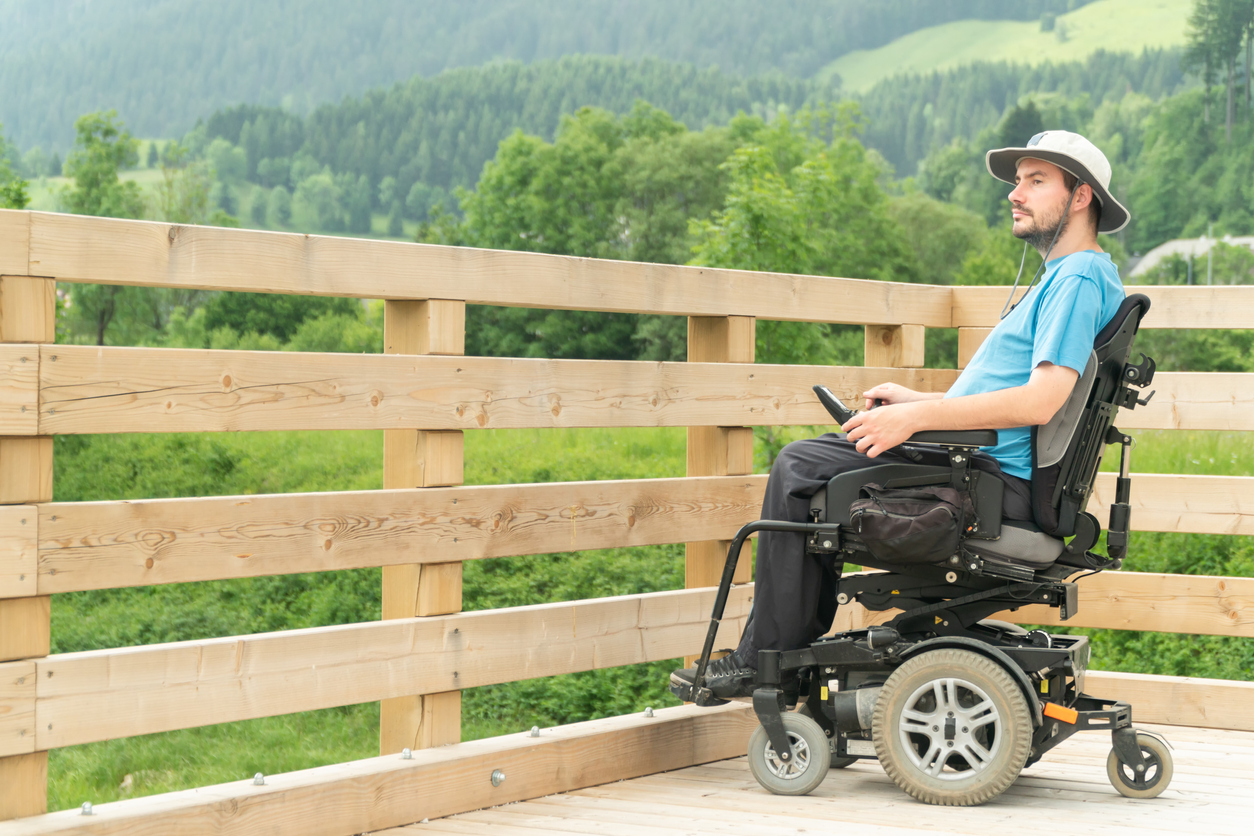Skin is the largest organ in the body and though we may not think about it often, skin plays an important role in overall health and wellness, particularly for people with spinal cord injury (SCI).
Skin protects the body from germs and illness in many important ways. In addition to controlling body temperature in both hot and cold environments, our skin holds fluids and nutrients inside the body.
Skin Integrity & Spinal Cord Injury
Skin integrity is especially important in a healthcare environment. When skin is compromised in this setting, a person is more susceptible to germs, illness, infection, and injury.
For people with spinal cord injury, dermatomes (the skin’s nerve endings) aren’t functional below the point of injury, causing the absence of sensation for things like pressure, sharpness, trauma (injury), and temperature. SCI also paralyzes sweating in dermatomes below the injury level, leaving skin vulnerable to breakdown due to excess moisture.
Precautionary measures to prevent skin breakdown are essential for people with SCI to maintain optimum health and wellness.
Common Causes of Skin Breakdown for People with SCI
With a spinal cord injury, collagen is lost which weakens skin and makes it less pliable. Lack of muscle function can lead to muscle atrophy, resulting in less padding and increasing the risk of skin breakdown.
Lifestyle also plays a role in the risk of skin breakdown. Insufficient nutrition, dehydration,
stress, lack of range of motion exercise, obesity,
depression, substance use, and smoking all increase a person’s risk of skin breakdown.
Pressure Ulcers: Limited mobility, coupled with decreased sensation, makes an individual with SCI more likely to develop a specific type of skin breakdown called a pressure ulcer. A pressure ulcer is a localized injury to the skin and/or underlying tissue, usually in boney areas, as a result of pressure and/or friction. Pressure ulcers are one of the leading complications for people with SCI, with up to 95% of adults developing at least one pressure ulcer at some point in their life.
Shearing and Friction Injuries: A shearing injury typically occurs from sliding the body across a surface, like a bedsheet or chair. With a shearing injury, bone moves against the subcutaneous tissue while the skin stays in the same position. This decreases blood flow to the area, leading to skin breakdown. This may occur with or without visible injury to the surface of the skin.
Excess Moisture: Too much moisture over-hydrates the skin, weakening it and making it more sensitive to friction, shear and breakdown (think about being in the tub or pool for a long time). Primary sources of excess skin moisture include
bowel and bladder accidents, sweating, and drainage from wounds.
Skin Hygiene Practices to Prevent Skin Breakdown with Spinal Cord Injury
Thankfully, there are several measures you can take to help identify and prevent skin breakdown. Healthy skin is intact, well lubricated with natural oils, and nourished with a good blood supply. There are several ways to maintain healthy skin and avoid skin breakdown.
Inspecting the Skin
Daily skin inspection helps with early detection of skin injury and/or breakdown and minimize skin tissue damage. It’s important for individuals and/or their caregivers to regularly inspect the entire body, with particular attention to bony areas that are more susceptible to skin breakdown. When using new medical equipment and devices, check the skin frequently to monitor for irritation or damage.
Look for blisters, redness, openings, and rashes on the skin. For reddened areas, use the back of the hand to feel for heat. The groin area is particularly susceptible to skin problems, particularly in men who wear external catheters.
Keep Skin Dry and Clean
Keep skin clean and dry. Dry the skin well after bathing, without rubbing too hard as it may increase irritation. Daily bathing is not recommended, as it washes away natural oils that lubricate the skin. Wear comfortable, breathable clothing whenever possible.
To keep skin clean, think beyond soap and water by practicing the use of skin cleansers that minimize the damage to skin proteins and lipids caused by surfactants. Ideally, cleaning agents should be in the lower pH range or between 4.5 and 7.0 After cleansing the skin, good moisturizing is essential within three minutes of bathing. Skin folds and creases should be cleansed at least twice per day to avoid moisture buildup and skin breakdown.
Caring for Your Skin in the Heat
When the temperature heats up there is a greater risk of skin-related complications for people with SCI. During the summer months in particular, protection from excess moisture is essential, as under dressings, wraps, and/or offloading devices can cause increased moisture retention to the skin.
Use Barrier Products in the Sun
While skin is exposed to the sun - whether it’s in cold or hot weather - it is important to use some type of barrier to protect skin against unwanted moisture. There are certain parameters to keep in mind when choosing a skin barrier. In general, skin protectants such as petrolatum-based products require frequent applications since they can easily wash off. Additionally, barrier products create an occlusive environment, reducing the skin’s ability to breathe. It is important to choose a barrier option that allows for movement and breathability.
Wound Care
When it comes to wound care, healing the wound in the shortest time possible with the least pain, discomfort, and potential for scarring are paramount. Early intervention is essential. Once a wound is identified and its causes have been established, a specialized treatment plan should be developed with input from a physician, nurse, and/or other qualified healthcare professionals.
Proper Bowel Care
Maintaining a
consistent bowel care program to avoid accidents is important. Constipation is a frequent complaint for those with spinal cord injuries, so staying hydrated and maintaining a balanced diet that includes your daily recommended fiber is very important. Bowel accidents can cause moisture buildup, rashes, and irritation, which leads to skin breakdown. A regular bowel program helps prevent this problem.
Enemeez® Products Can Help with Proper Bowel Care
The
Enemeez® formulation functions as a stool-softening laxative by drawing water into the bowel from surrounding body tissues. The docusate sodium in this mini enema product prepares the stool to readily mix with watery fluids. Not only does it soften and loosen the stool, but it initiates a normal, replicated bowel movement, typically within 2-15 minutes.
Join the Thrive Community!
We’ve gathered a number of inspiring individuals with disabilities in our very own Thrive Community! The
Thrive Community Facebook Group is a private space for any person with a disability, as well as caregivers and healthcare providers that touch their lives.
Our purpose is to provide a safe, educational space for group members to ask every question, connect with their peers, and empower each other through communication and connection. Our conversations are led by incredible individuals who themselves are living and thriving.
For more enlightening resources, information, and discussion, join the
Enemeez® Thrive Community today!
Disclaimer: The material contained is for reference purposes only. Alliance Labs, LLC and Summit Pharmaceuticals do not assume responsibility for patient care. Consult a physician prior to use. Copyright 2020 Summit Pharmaceuticals and Alliance Labs, LLC.
Sources:
- https://myelitis.org/resources/skin-health-prevention-and-treatment-of-skin-breakdown/
- https://www.rainbowrehab.com/a-look-at-skin-and-wound-care-after-brain-or-spinal-cord-injury/
- https://pubmed.ncbi.nlm.nih.gov/20136475/













